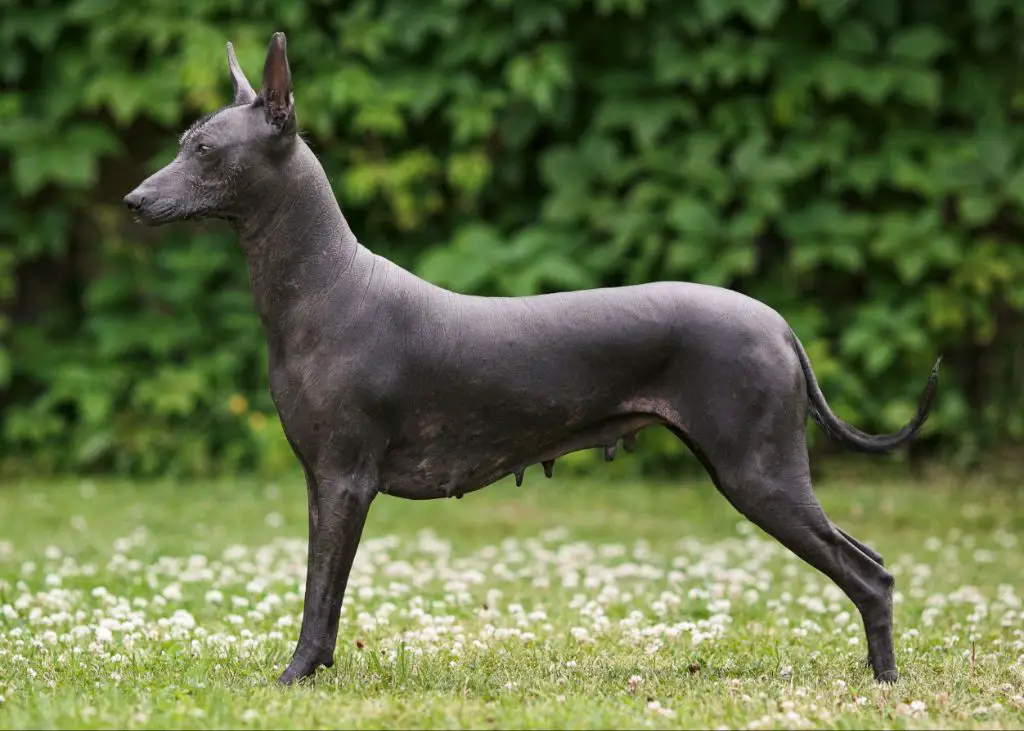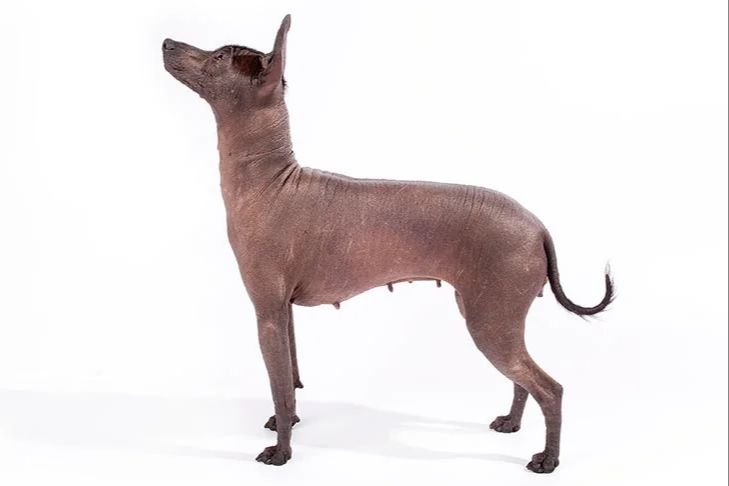Introduction
Mexico is known for its rich history and culture, which includes many myths, legends, and symbols that represent the country’s national identity. One lesser known but important symbol is Mexico’s national dog breed – the Xoloitzcuintli. This ancient, hairless breed has a long history intertwined with the indigenous cultures of Mexico and was even revered in Aztec mythology. The Xoloitzcuintli is a primitive dog that has existed in Mexico for over 3000 years. In recent decades, it has gained recognition as an official national symbol and the national dog breed of Mexico. This designation honors the Xoloitzcuintli’s crucial role in Mexican history, folklore, and identity.
Origin and History
The Xoloitzcuintli breed, commonly known as the Mexican hairless dog or Xolo, has extremely ancient origins dating back over 3,500 years to pre-Columbian Mexico. Archaeological evidence shows that hairless dogs very similar to the modern Xolo existed during the time of the Aztecs, Mayans, Toltecs, and other ancient indigenous civilizations (1).
The Xolo is believed to have descended from dogs that migrated from Asia to North America with humans over 10,000 years ago. Selective breeding for hairlessness likely began soon after, as hairless dogs appear in Mexican artwork and artifacts dating back over 2,000 years (2). Remains of hairless dogs have been found in burial sites of the Colima, Mayan, Toltec, Zapotec, and Aztec peoples.
The breed was treasured by Mesoamerican civilizations and became an integral part of indigenous culture. Xolos were believed to guide departed souls to the underworld and offered protection against evil spirits. They were also valued as companions, healers, and sources of food and medicine (3).
References:
(1) https://www.akc.org/expert-advice/dog-breeds/xoloitzcuintli-history-behind-the-breed/
(2) https://mestizomarket.com/2021/03/16/a-brief-history-of-xoloitzcuintli-breed/
(3) https://www.nationalgeographic.com/history/article/hairless-dog-mexico-xolo-xoloitzcuintli-Aztec
Physical Characteristics
The Mexican hairless dog, also known as Xoloitzcuintli, is a hairless breed of dog that comes in different sizes ranging from toy to miniature to standard. They have slender bodies and almond-shaped eyes. Their skin can range from solid black, gray, bronze, or reddish depending on the dog. What makes the Xolo unique is its lack of coat and hairlessness, though some coated varieties do exist. They have either a short sparse coat, a patchy coat, or even a normal coat but with hairless parts. Their skin can be either smooth or covered in small bumps. The coated varieties will have short, sleek fur.
The Xolo comes in three different sizes: toy, miniature and standard. The toy stands up to 13 inches tall and weighs 5 to 15 pounds. The miniature is between 13 to 20 inches and weighs 10 to 30 pounds. The standard is the largest at 20 to 30 inches tall and 30 to 50 pounds. They have lean, athletic bodies with pronounced ribs but not overly skinny. Their long legs make them agile and swift. The Xolo’s head is carried high and proudly. They have a long muzzle and large upright ears. Their long thin tail either hangs down or curls upwards over their back. Overall, their unique nearly hairless body gives them an elegant yet robust appearance.
Temperament
The Xoloitzcuintli has a calm, alert, and intelligent temperament. They can be somewhat aloof with strangers but are extremely loyal and affectionate with their owners. According to the AKC, they form very strong bonds with their human families. Xolos are often described as quiet and clownish. They enjoy being around their owners and thrive on human companionship. Without sufficient human interaction, Xolos may become anxious or depressed.
The Xolo is an adaptable breed that enjoys lounging around the house but also has an energetic side to play. They are observant and attentive dogs that are quick to alert their owners to anything unusual. Xolos are said to be territorial watchdogs who may be wary of strangers. With proper socialization from a young age, they can learn to accept visitors into the home. They generally get along well with children and other pets when raised together.

Xoloitzcuintlis are intelligent and respond well to patient, positive training methods. They can be strong-willed at times and need consistent leadership. Owners should be prepared to provide this sensitive breed with the structure, socialization, and companionship they need to be happy, confident dogs.
Overall, the Xoloitzcuintli is a loving and loyal companion when given the proper environment, attention, training, and outlet for their energy. Their mellow temperament combined with their natural watchdog abilities make them excellent house dogs. With appropriate human interaction, Xolos thrive as doting and devoted pets.
Role and Purpose
The Xoloitzcuintli has a long history and important cultural significance in Mexico. Originating with the Aztecs, Xolos were considered sacred dogs and were bred to serve multiple purposes. According to the American Indian Magazine, Xolos were believed to guide souls to the underworld after death and were often sacrificed and buried alongside their owners to accompany them in the afterlife.
Xolos also served as companions and protectors, prized for their loyalty and attachment to their owners. They were utilized as hunters, herders, and guardians by the Aztecs, Toltecs, Zapotecs, and other indigenous peoples of Mexico. The hairless variety in particular was believed to have healing powers and thermoregulatory abilities that could ward off rheumatism, asthma, and pain
(Source: https://www.americanindianmagazine.org/story/Xoloitzcuintli-the-Hairless-Dog)
Over time, the Xolo became integrated into folklore, spiritual beliefs, and cultural celebrations in Mexico. Revered as symbols of protection, healing and spiritual guidance, Xolos remain Mexico’s national dog breed today.
Decline and Rediscovery
The Xoloitzcuintle was in danger of extinction in the early 20th century. As industrialization and modernization came to Mexico, the breed’s native functions became less useful and popular. With the introduction of new breeds from Europe and North America, the indigenous Xoloitzcuintle was increasingly overlooked and its numbers dwindled dramatically. By the 1940s, the Xoloitzcuintle was pushed to the brink of extinction with only a few specimens left in remote villages (https://www.akc.org/expert-advice/dog-breeds/xoloitzcuintli-history-behind-the-breed/).
In the 1950s, determined to save the ancient breed, a team of Mexican dog experts led expeditions into the countryside to find any remaining purebred Xoloitzcuintles. After extensive efforts and searching isolated villages, they collected enough dogs to begin a focused breeding program. This dedicated group brought the breed back from the edge through careful breeding to preserve the Xoloitzcuintle type. Their work returned the breed to Mexico’s dog fanciers and laid the foundation for recognition and popularity today (https://curiosmos.com/xoloitzcuintle-the-3000-year-old-ancient-mexican-dog-breed-that-dodged-extinction/).
Recognition as National Dog
The Xoloitzcuintli was officially recognized as the national dog breed of Mexico in 1940. This formal designation came after the breed had already been an important part of Mexican history and culture for centuries. According to the American Kennel Club, the breed was first recognized by the original indigenous tribes of Mexico, including the Aztecs, Mayans, and Toltecs. The Xoloitzcuintli was viewed as a sacred dog and held an important place in the mythology and religious beliefs of these ancient cultures.

In the 20th century, efforts were made to preserve the Xoloitzcuintli and gain official recognition for its status as a national symbol of Mexico. After years of decline, Mexican breeders formed the Asociación Mexicana de Criadores de Perros Xoloitzcuintle to revive the breed. This group worked diligently to protect the breed’s legacy and historic connection to Mexico. Their efforts led to the Xolo becoming the official national dog of Mexico in 1940, a designation that remains to this day.
This official recognition highlighted the Xoloitzcuintli’s cultural significance and its long history with the indigenous people of Mexico. The national dog designation honored the breed’s status as a living link to Mexico’s pre-Columbian civilizations and an important part of the country’s unique heritage. It cemented the special relationship between the hairless dog and the Mexican people.
Sources:
https://richardbalthazar.com/2016/09/24/aztec-icon-11-ocelotl-jaguar-lord-of-the-animals/
https://richardbalthazar.com/tag/jaguar/
Popularity and Breed Status Today
The Xoloitzcuintli, often called simply the Xolo, has grown in popularity and breed status in recent years, especially in the United States. According to the American Kennel Club (AKC), the Xolo was admitted into the AKC’s Miscellaneous Class in 2011 and then became fully recognized by the AKC in 2013 (AKC). While the Xolo is still considered a rare breed, its numbers are growing. According to Wisdom Panel, Xolo registrations increased by over 40% from 2012 to 2013 after gaining AKC recognition (Wisdom Panel).
The Xolo has grown beyond its native Mexico and is now found in many other parts of North America and the world. Its rising popularity is likely due to increased exposure, its unique appearance, and its loyal yet protective temperament. While the hairless variety remains more popular, the coated variety, recognized as a separate breed by the AKC, is gaining ground as well.

Despite its growing popularity, the Xolo is still considered a rare breed. It ranks near the bottom third of AKC registered breeds, with less than 1,000 new AKC registrations per year as of 2020. Dedicated Xolo breeders remain limited in number but continue to promote and develop the breed. With its steep rise in just the past decade, the once-endangered Xolo breed seems to have found new life with dog lovers seeking a distinctive and devoted companion.
Ownership and Care
The Xoloitzcuintli, commonly called the Xolo, has some unique care requirements compared to other dogs. As a primitive breed, they are generally healthy dogs, but owners should be aware of their grooming, exercise, training, and other needs.
Grooming a Xolo depends on if it has hair or is hairless. Hairless Xolos require no brushing and only occasional bathing when dirty. Their skin should be moisturized regularly with lotion or oils to prevent dryness. Coated Xolos have easy-to-care-for short coats that only need weekly brushing to remove loose hair. Both types shed minimally. Their nails should be trimmed regularly.
Xolos need daily exercise, but do not require intensive amounts. A moderate daily walk plus free playtime is sufficient. They enjoy hiking and interactive games with their owners. Due to their bare skin, hairless Xolos may need protective clothing in cold or very sunny weather. All Xolos are sensitive to cold.
Early socialization and positive training methods are important for Xolos. They can be independent thinkers, so persistence and consistency are key. Their primitive origins mean they have strong instincts to guard, hunt prey, and roam. Proper containment and supervision are essential.

Potential health issues to be aware of include dental problems, patellar luxation, and allergies. Hairless Xolos are also prone to sunburn. Responsible breeders screen for health problems plaguing the breed.
In the right home, Xolos make wonderfully loyal and affectionate companions. Their minimal grooming needs and overall good health are attractive traits for owners. However, their strong instincts require commitment to training and vigilance.
Conclusion
In summary, the Xoloitzcuintli, also known as the Mexican Hairless Dog, has a long and storied history dating back over 3,500 years to Pre-Columbian times. Revered by ancient Aztec and Mayan cultures as a sacred and mystical dog who accompanied souls to the underworld, the Xolo nearly went extinct after the Spanish conquest of Mexico. Thankfully, starting in the 1950s, the Xolo was rediscovered and steps were taken to revive the breed. Today, this loyal, alert and intelligent dog is recognized as the official National Dog of Mexico and its popularity around the world continues to grow. With proper socialization and ownership by an active family, the Xolo can be a delightful and fascinating companion.
